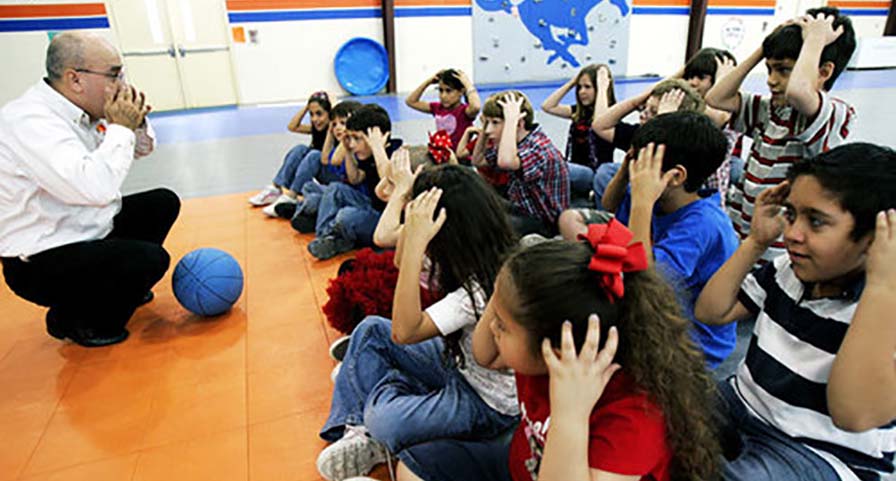
Even in retirement, former McAllen (Texas) Independent School District Physical Education Administrator Mario Reyna remains focused on student health and wellness.
Today, Reyna is one of two candidates for the President-Elect role on the SHAPE America Board of Directors. He earned this opportunity by spending the bulk of his McAllen ISD career working to give his district’s students every chance to improve their physical fitness and overall wellness.
During his tenure, Reyna worked tirelessly to make sure the teachers he worked with had everything they needed to positively motivate students to achieve their fitness goals.
Reyna proved especially successful in working with district leadership to request federal funding to purchase tools including IHT ZONE heart rate monitors. On multiple occasions, Reyna successfully secured part of the Every Student Succeeds Act (ESSA) funding that the district receives annually to purchase more heart rate monitors for students.
His strategy to secure funding is something teachers and administrators in other districts and states could use to request a portion of their own district’s ESSA funding. Reyna’s process included the following strategies.
- Getting to know the school district’s funding department and coordinator
- Understanding the language within the ESSA requirements
- Keeping a proposal at his fingertips
Getting to know the school district’s funding department and coordinator
Most school districts have a department dedicated to distributing federal funding such as ESSA or ESSER, the COVID-19 related funding distributed in three allocations over the last few years. As he considered how he would purchase the IHT ZONE monitors his teachers wanted, he made sure McAllen’s director of state and federal programs knew who he was.
“Those are the people who you have to lobby that you want to be considered for some of that funding,” Reyna said.
Further, Reyna kept his district’s funding director up to date on how his program benefited from what he purchased with the ESSA funding. He also made sure to thank the director when talking about his process.
“I always make sure I include my stakeholder (when we get recognition),” he said. “We were featured in a ‘Momentum’ story by SHAPE America, and I included a quote from (our director). I make sure they see that. I don’t know about other people, but when you give me money, I’m going to show my appreciation.”
Understanding the language within the ESSA requirements
Reyna increased his chances for success by understanding the requirements of the funding he sought. He did his homework much the same way a lobbyist would study the position being supported.
“You have to do your homework and almost become a mini-lobbyist fighting for your money,” he said.
Fully understanding the language also helped Reyna strengthen his proposal because he saw how heart rate monitors impact student health beyond the PE world. ESSA’s key tenet is supporting “whole child education.” While that language opened the door for PE as a key component of a well-rounded education, it also showed Reyna the importance of explaining the other benefits to students, namely emotional health and academic readiness.
“Wellness will improve the academics without a doubt,” he said. “That’s been proven before.”
Keeping a Proposal Handy
Once his first two steps produced the desired results – Reyna received several rounds of ESSA funding to deliver heart rate monitors to teachers across his district – he kept a proposal ready in case more funding became available – and because his networking succeeded, he often learned about more available funding before other department leaders.
“I am always ready with a proposal if they say they have ESSA money left over,” Reyna said. “(My funding coordinator) sent me an email that there was $20,000 left over and what could I do with it? Right away, I sent her a proposal. Perhaps she’s sending that same email to other departments, but I don’t want to miss out on it, so I am going to be ready to request money when given the opportunity.”
Align Yourself with District Long-Term Planning
Another key strategy, explained by renowned PE advocate Dr. Kymm Ballard, involves linking the request to the district’s campus improvement plan.
“That’s where a lot of money goes,” Ballard said. “If you’re working with your school improvement team, you’re working on the bigger picture. If you can make your case on that kind of team that health and PE needs to be a priority, you may not get the first round of dollars, but you’ll be able to get some of those dollars.”
Like Reyna, Ballard also advises teachers seeking funding to network with the office that controls the funding.
“One of the first things I tell people….is to make friends before you need them,” she said. “That’s relationship-building. When you go to people and ask for money and they’ve never seen you before, chances are you’re not going to get it.”
Reyna agreed.
“I went to the key stakeholder in my district and I sat with that person to discuss how I could get some of that money,” Reyna said. “Once that person knew that I knew what I was talking about and why deserved some of that money, they were very willing to listen. You have to speak out for your program.”


